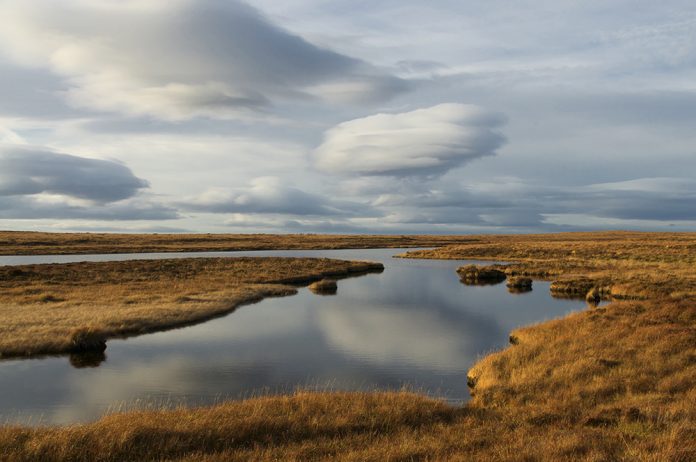A pilot project using Internet of Things (IoT) sensors to monitor the health of Scotland’s vital peatland is set to continue after demonstrating ‘significant success.’
The award-winning trial used 10 strategically placed IoT sensors around Loch Orasaigh to capture reliable real-time information on water table dynamics at the degraded peatland prior to restoration.
And the Dashboard›s accurate capture of real-time data means there is no need for physical visits to the remote site.
Dr Andrew Muir, CEO at FarrPoint which developed the system, said: “Many people don’t realise how vitally important peatland is to the environment. As well as supporting biodiversity, Scotland’s peatlands store 1.7 billion tons of carbon – the equivalent of around 140 years of the country’s annual greenhouse gas emissions.
“If peatland gets damaged and dries out – and at present, an estimated 80% of Scotland’s peatland is damaged – it releases a huge amount of CO2 into the atmosphere, making the problem of climate change even worse.”
Functioning peatlands usually have a water table close to the ground surface throughout the year, and their dynamics are an important indicator of overall peatland condition. Traditional monitoring can be a costly and time-consuming manual task, requiring regular travel to monitoring stations in often remote locations, some of which are only accessible on foot.
- A comprehensive evaluation of the pilot found the technology could result in:
- a reduction in the cost of monitoring the peatland site.
- a reduction in the environmental impact of monitoring by removing the need to travel to the site, as well as reducing the disruptive impact of visits on the natural peatland.
- an improvement in the quality and timeliness of the monitoring data.
- an enhanced ability to remotely monitor issues with sensors.
NatureScot Peatland ACTION now aim to continue the innovative monitoring project during and after peatland restoration at the site to evaluate outcomes.
The Scottish Government-funded study, which monitored the remote area of the Western Isles over 12 months, was initiated and carried out by FarrPoint in collaboration with NatureScot Peatland ACTION, the Carloway Estate Trust, Scottish Water and Scottish Futures Trust.
Based on its success, NatureScot has now confirmed additional funding to allow the project to continue for another year, with a view to potentially rolling the technology out to other locations in future.
Lucy Elliff, of NatureScot, said: “This pilot is an example of the innovative and collaborative ways in which we can monitor peatland restoration outcomes and support the delivery of the Scottish Government’s commitment to restore 250,000 hectares of peatland by 2030.”
Jared Stewart, Scottish Water’s spokesman, added: “People may be surprised to learn that around 70% of Scotland’s public drinking water has a start in peatland. By restoring damaged peatland, we aim to protect and improve the quality of the source water received by our treatment works, as well as provide the co-benefits of carbon capture and increased biodiversity. “
The full evaluation report can be viewed here. Find out more about FarrPoint’s work to minimise the impact of climate change here.



